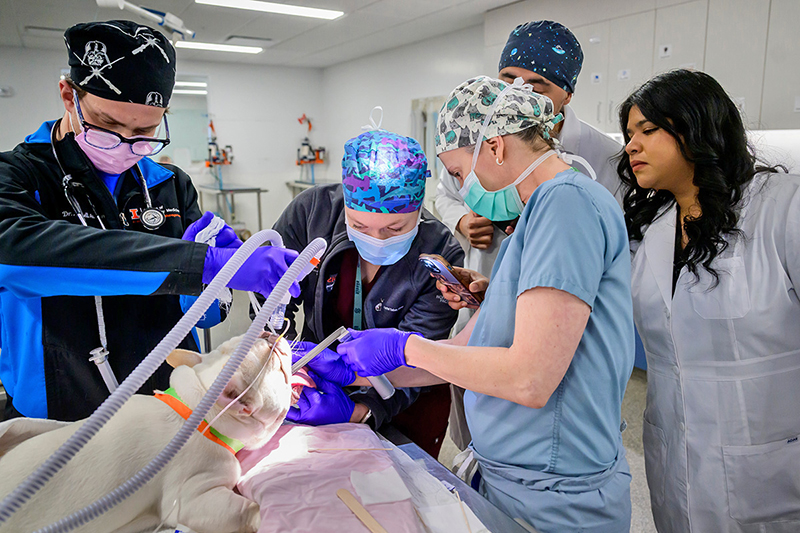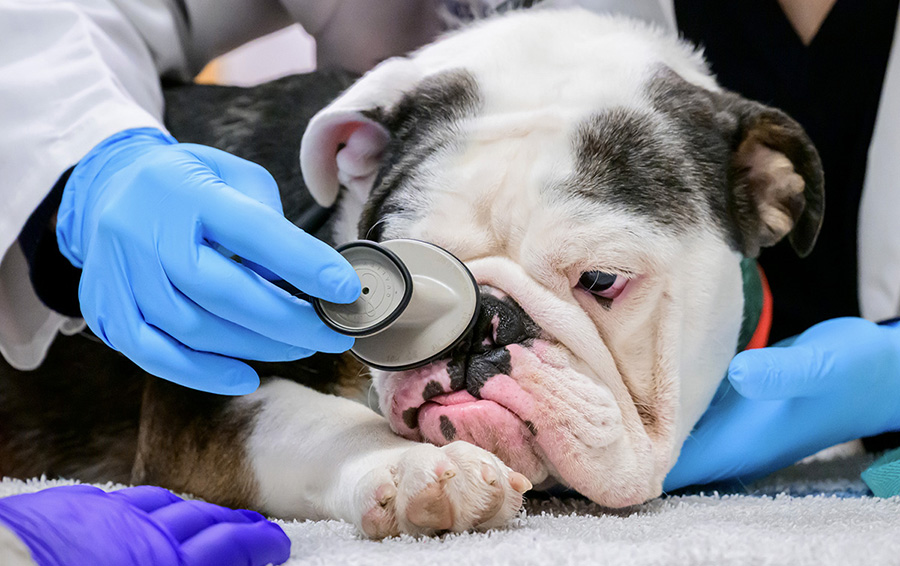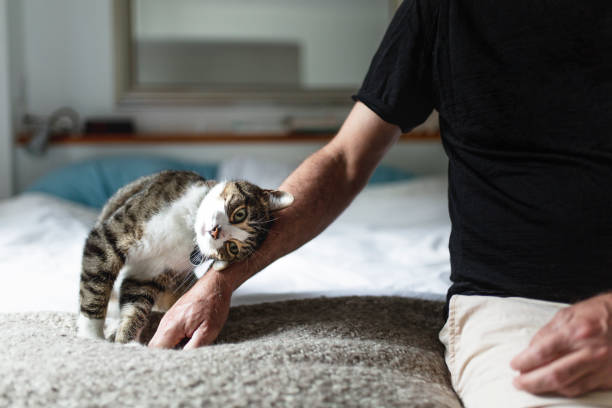The demand for bulldogs and other flat-faced pets is at an all-time high. According to the American Kennel Club, from 2006-2016, the number of registered bulldogs and French bulldogs in the U.S. increased by 60% and 476%, respectively. In 2023, the French bulldog topped the AKC’s most popular breeds list.
But as the popularity of these pets increases, so do the serious respiratory ailments that often afflict them, says Dr. Heidi Phillips, a professor of veterinary clinical medicine at the University of Illinois Urbana-Champaign and an expert in the treatment of brachycephalic (short-skulled) dog and cat breeds. She argues that the host of physical problems that many brachycephalic animals experience must be addressed – through surgical interventions for now, but also by training veterinarians and breeders to grade the fitness of dogs and cats before breeding to avoid producing offspring with the most devastating physical attributes.
The most distressing traits in French bulldogs, which make up about 95% of Dr. Phillip’s surgical patients, include very narrowed nostrils, excess tissue in the nostrils and nasal passages, big tongues with excessive fat, narrow tracheas, and a severe thickening and elongation of the soft palate, all of which combine to profoundly impair breathing, causing snoring, exercise and heat intolerance, lethargy, regurgitation, weight loss and even tumors. Dr. Phillips has discovered similar breathing problems in flat-faced cat breeds, such as Persian, Himalayan, and exotic shorthair cats.
It’s Not Normal
The most severely affected animals struggle constantly to get air through their constricted and obstructed airways, but many owners think this is normal for the breed and do not seek treatment.
“I tell my students to plug their noses while attempting to take a breath with their mouth closed. What they feel when they do so is the increased negative pressure required to breathe against an obstruction of the upper airway, something brachycephalic dogs and cats feel with almost every breath every day of their lives,” Dr. Phillips said.
The negative pressure in the respiratory tract also causes the lining of pockets of tissue in the larynx, called the laryngeal ventricles, to turn inside out when the animals work hard to take air into their lungs. These protrusions further obstruct airflow.
The physical problems only compound from there, Dr. Phillips said.
Tumors, Hernias, Heart Problems
“The negative pressure causes secondary changes which can further worsen oxygen levels,” she said. Many flat-faced dogs will develop cancerous tumors in oxygen and pressure sensors in the neck and at the base of the heart. The increased pressure from labored breathing can also bring on gastrointestinal problems such as hiatal hernias and acid reflux diseases.
“We also see changes in their lungs where they get what’s called pulmonary hypertension or high blood pressure in the lungs,” Dr. Phillips said. “It takes longer for the blood to get through the arteries, and they can get right-sided heart failure.”
The dogs with the worst obstructions also suffer from severe sleep apnea. People who sleep with their bulldogs or pugs often wake to the sounds of snoring or choking pets, and many of these pets and their owners get very little rest.

Providing Surgical Relief
Surgical interventions can address some of the obstructions. Dr. Phillips is one of only three veterinarians in the world to perform laser-assisted turbinectomy, an endoscopic procedure that uses a laser to open pathways for air in the otherwise obstructed nasal passages of bulldogs and other flat-faced dogs. Other novel procedures performed by Dr. Phillips increase the size of the nostrils or reduce the length and thickness of the soft palate. Each of these interventions can dramatically improve a dog’s ability to breathe, but combining them brings about the greatest relief from the most severe symptoms to improve each dog’s quality of life and overall health.
Perhaps the most effective way to address the problems is to breed only the healthiest bulldogs, pugs or other flat-faced breeds, Dr. Phillips said. She points to an initiative by Dr. Jane Ladlow, a veterinary specialist at the University of Cambridge in the U.K., to promote a respiratory health screening in bulldogs, French bulldogs and pugs. The test, called the Respiratory Function Grading Scheme, evaluates a dog’s symptoms of respiratory distress at rest and during exercise. Dr. Ladlow developed the protocol with the U.K. Kennel Club.
Keep Breed Attributes, Eliminate Health Problems
In early 2023, the U.S.-based Orthopedic Foundation for Animals licensed the RFGS screenings for use in the U.S. But so far, most breeders and owners in the U.S. are unaware of the problem or lack the skills required to screen pets for functional respiratory health or use the grading scheme to evaluate the health of breeding pairs and their offspring, Dr. Phillips said.
“What I find with most owners is that they didn’t set out to purchase a dog with breathing problems,” she said. “But they find themselves in a situation where their dog has health issues, and they want to do whatever they can to rescue them.
“My approach is to say let’s apply the science and see if we can still hold on to all the wonderful attributes of these breeds while also trying to eliminate as much as possible the difficulties these animals are experiencing.”
View the complete article on the University of Illinois News Bureau website.
By Diana Yates, Life Sciences Editor, U. of I. News Bureau
Photos by Fred Zwicky




